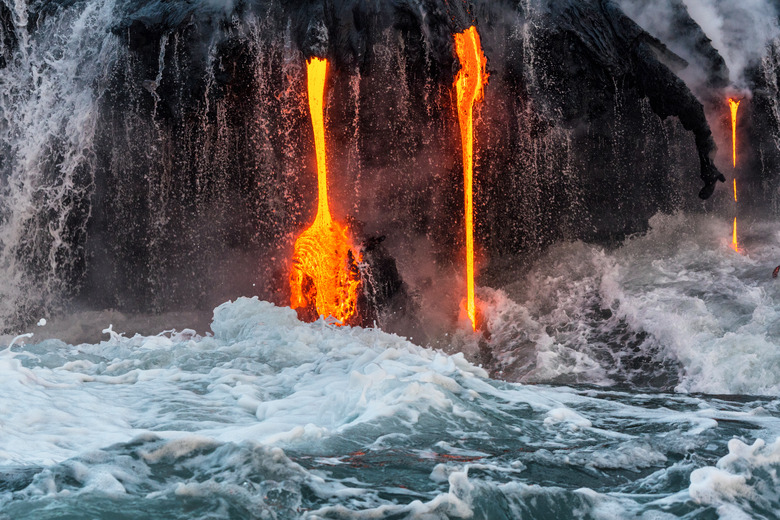Natural Disasters Caused By Plate Tectonics
Plate tectonics are among the most influential forces that shape Earth. The Earth's surface is not a single, solid mass but is instead made up of many plates, each one slowly sliding on top of the planet's underlying mantle. Most of the time, these plates move slowly and only create changes over the course of millions of years. Sometimes, however, two plates move abruptly with respect to each other. When that happens, the Earth's surface is subject to natural disasters. Events such as earthquakes, volcanoes and tsunamis all result because of plate tectonics.
Rocks that Roll: Earthquakes
Rocks that Roll: Earthquakes
Most earthquakes occur as the result of the sudden movement along a fault line between two adjacent tectonic plates. The movement of the plates is not always smooth. The plates "catch" on each other due to friction. Since the plates are always moving, these catches cause energy to build up along the fault line. Eventually, when this catch gives way, the energy releases in an earthquake. The famous San Andreas fault in California marks the location where the North American plate and the Pacific plate slide past each other. The two plates move at a rate of about 6 cm per year, causing hundreds of tiny earthquakes yearly and the occasional major earthquake. Movement along this plate boundary caused the earthquakes that hit San Francisco in 1906 and 1989.
Erupting Volcanoes
Erupting Volcanoes
In general, volcanoes occur either along plate boundaries or over "hot spots." When a plate moves over the top of another plate, the energy and friction melt the rock and push the magma upwards. The increased pressure of this molten rock causes a swelling in the surface–a mountain. The pressure continues to build over time, and, without any other outlet for release, the mountain eventually explodes as a volcano. Volcanoes also occur where plates are pulling apart as magma oozes up to fill the resulting gap. The type of volcanic eruption, explosive or mild, essentially depends on the underlying molten rock. Rock that is "sticky" when melted tends to plug the volcano's vents until the pressure of underlying gases causes an often cataclysmic eruption. This type of eruption occurred at Mt. St. Helens in Washington in 1980. Other types of rock flow more smoothly when melted. In this case, the molten rock flows out of the volcano in gentler and longer eruptions. The famous Hawaiian volcanoes usually erupt in this way.
Seismic Sea Waves
Seismic Sea Waves
Plate tectonics indirectly cause seismic sea waves, better known as tsunamis. When a major seismic tremor shifts the crust underneath a body of water, the energy from that tremor transfers into the surrounding liquid. The energy spreads out from its original site, traveling through the water in the form of a wave. A tsunami wave poses little danger while in the open ocean. When the wave reaches shore, however, another story emerges. The trough of the great wave strikes land first, often seen as the pulling of water away from the shore. Then the wave peak hits, with disastrous consequences. Depending on the location of the original tremor, the configuration of the local sea floor and the distance from the tremor, the tsunami varies in size, number of waves and arrival time. The devastating tsunami of December 2004, which killed more than 300,000 people around the edges of the Indian Ocean, emanated from an extremely powerful earthquake (MW, or moment magnitude, 9.2) on the ocean floor near Indonesia.
Cite This Article
MLA
Brown, Laurel. "Natural Disasters Caused By Plate Tectonics" sciencing.com, https://www.sciencing.com/natural-disasters-caused-plate-tectonics-5516200/. 19 April 2018.
APA
Brown, Laurel. (2018, April 19). Natural Disasters Caused By Plate Tectonics. sciencing.com. Retrieved from https://www.sciencing.com/natural-disasters-caused-plate-tectonics-5516200/
Chicago
Brown, Laurel. Natural Disasters Caused By Plate Tectonics last modified August 30, 2022. https://www.sciencing.com/natural-disasters-caused-plate-tectonics-5516200/
